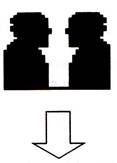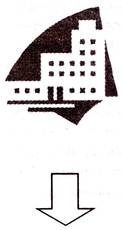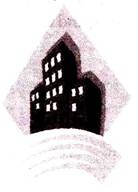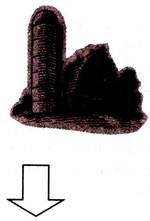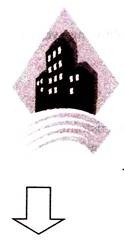After reading this article you will learn about the clearing process of cheques.
The clearing process begins with the deposit of a cheque in a bank. The cheque (along with other cheques) is delivered to the bank/branch where it is drawn. The cheque is passed for payment if the funds are available and the banker is satisfied about the genuineness of the instrument.
The cheques that are unpaid are returned to the presenting bank through another clearing called the Return Clearing. The realization of the funds occurs after the completion of return clearing and by the absence of an unpaid cheque.
Cheques Clearing Cycle:
ADVERTISEMENTS:
Following steps are to be taken during clearance of cheque:
Step 1st:
The customer
Step 2nd:
ADVERTISEMENTS:
The PRESENTING BANK where cheques are presented by payee for deposit in his / her a/c.
Step 3rd:
ADVERTISEMENTS:
The RCC:
Regional collecting centre- to collect all cheques from their presenting branch.
Step 4th:
ADVERTISEMENTS:
Clearing House:
To collect cheques from RCC and for settlement of cheques.
Step 5th:
ADVERTISEMENTS:
Drawee’s RCC:
Again they collect cheques from the clearing house and send to their drawee bank.
Step 6th:
ADVERTISEMENTS:
Drawee Bank:
It collects cheques from their RCC and debits the customer a/c.
The settlement of funds in clearing occurs at several levels. The aggregate amount or value of cheques presented by a bank on other banks represents the claim by that bank on other banks. All the banks on every other bank in the clearing make similar claims.
ADVERTISEMENTS:
A net settlement is arrived at the clearinghouse and the debit or credit position of the bank is determined. These are booked in their current accounts maintained by the settling bank. This represents the inter- bank settlement. The settlement of funds between the service branch and the branch concerned represents the transfer of funds to the branch level.
The payment process is completed only when the funds are debited from the drawer’s account and credited to the payee’s account. This occurs after the completion of the return clearing mentioned.
Return Clearing:
The cheques returned by drawee Branch for any reason to Service Branch are returned to presenting Bank as unpaid cheques. The aggregate of all items unpaid is debited to the original presenting bank and credited to the drawee bank. The same process is mirrored in the inter- branch settlement at the service branch of a bank. The credit given to the payee on account of the cheque is reversed.
Inter-branch clearing:
ADVERTISEMENTS:
Cheques presented by customers drawn on different branches of the same bank need not be sent to the clearing house as the transfer of funds is internal to the bank. The service branch usually acts as a settlement branch for the branches and the instruments are sent to the drawee branches while the inter-branch accounts are credited or debited internally. (Fate of returned cheques)
How Cheque Comes Again To Customer:
There are various reasons which are responsible for unpaid of cheques.
A following cycle of unpaid cheque is:
Step 1st:
Drawee Bank:
ADVERTISEMENTS:
It collects cheques from their RCC and debits the customer a/c. If sufficient balance not found then drawee bank again sends cheque to their SERVICE BRANCH
Step 2nd:
Drawee’s SERVICE BRANCH:
Again they collect cheques from the drawee branch and send to the clearinghouse.
Step 3rd:
ADVERTISEMENTS:
Clearing House:
To collect again cheques from Service Branch and send unpaid cheques to the presenting Service Branch
Step 4th:
The RCC: (Regional collecting center)
ADVERTISEMENTS:
To collect all unpaid cheques from the settlement house and send to their respective branches.
Step 5th:
The presenting bank:
It collects unpaid cheques from the Service Branch and sends to the customer with written letter containing the reason why the cheque is not to be paid.
Step 6th:
The customer who collects his cheque from his/her presenting bank with some written letter with specific reason popularly known as returning memo.
Time Span:
The total clearing cycle including the return clearing introduces a time span in the payments process. The need for physical presentment of the cheque at the branch where it is drawn on, requires the movement of cheques from one place to another.
As a result, the recipient of payment has to wait until the collecting banker is fully satisfied that the cheque has been paid. This time lag will continue irrespective of the level of technology and improvements in process, so long as the physical presentment of the cheque is necessary as per the banking law.
What is the Time Taken for this Clearing Process?
Generally, if a cheque is to be paid within the same city (local cheque), it would take 2-3 days. In some large cities, there is a system called High Value Clearing, which facilitates completion of cheque clearing cycle on the same day, and the customer depositing the cheque is permitted to utilize the proceeds next day morning.
However, coverage of this High Value Clearing is very limited and usually available at the branches in the main business area; say Fort and Nariman Point area in Mumbai and Connaught Place in New Delhi.
Would a Bank Customer Incur any Charges by Using Cheques for Payments?
The person receiving payment by means of cheques would incur some charges to realize the funds through his/her bank. In case of local cheques, no charges are levied. In case of outstation cheques, the bank would take some processing/collection charges depending upon the amount of the cheque and the place from where it has to be realised. The banks themselves generally decide the charges levied by the banks. Banks are also required to publicise the schedule of service charges.
The cheques clearing system as explained above is undergoing many changes to make it possible the cheques are cleared as early as possible and the customers are afforded credit immediately after they deposit a chaque with his/her bank.
In case of the cheques belonging to the account holders of the same bank and the branches of the bank(both where cheque is deposited and the branch from where money is to be collected are under centralized banking system) the cheques are collected same day subject to certain charges.
In case the cheques are not drawn on any branch of the same bank and are drawn on the branch of some other bank a new system has already been started by the Reserve Bank of India, which is known as CHEQUES TRUNCATION.
